About a year ago I reviewed the 2018 version of this software. It was an interesting comparison for me, as I started using it back when it was still owned by Jasc Software (before Corel bought it).
Now we have the 2019 version, dubbed Paint Shop Pro 2019 Ultimate. And as someone who uses Lightroom and Photoshop, I was interested to see how it stacks up.
The Basics
Corel Paint Shop Pro 2019 is a Windows-only product that comes in two editions – Standard and Ultimate.
The Standard edition features creative presets powered by AI, 360-degree photo editing, enhanced performance, features, enhanced usability and ease of use, and new creative content.
The Ultimate edition includes everything in the Standard edition as well as:
- Photo Mirage Express
- Painter Essentials 6
- Perfectly Clear 3.5 SE
- Aftershot 3
- Creative Collection of brushes, textures and backgrounds.
Note: Painter Essentials 6, Perfectly Clear 3.5 SE and Aftershot 3 will run only on the 64-bit version of Windows.
Both come with a 30-day free trial, and the $ 99.99 USD price tag is for a perpetual one-off licence, not a subscription.
For more information, check out the website.
Workspaces
PSP 2019 Ultimate has two workspaces – Essentials and Complete.

Essentials is a cut-down version aimed very much at beginners, while Complete has all the features and options. To distinguish between them, Corel has made the interfaces different shades of grey.
Essentials is a light grey, although you can adjust it to one of three different shades. You can also adjust the size of the buttons on the toolbar to make them bigger (as shown below), and move the toolbars and palettes around to suit.

Complete is a dark charcoal grey, and has the filmstrip of images along the bottom.

Layers comes up by default in Complete, whereas I had to manually add it in Essentials and dock it where I wanted it to go. So if you plan on using layers I’d opt for the Complete workspace, although you can switch between them quite easily.
Performance
I tested the performance of PSP 2019 Ultimate on my standard Photoshop machine. It has:
- an Intel Core i7 processor
- 24GB of memory
- two 180GB SSD in a Raid 1 configuration for the operating system
- two 500GB SATA drives in a Raid 1 configuration for extra backup (PSP was installed on this array)
- network attached storage (NAS) for all my RAW files.
Admittedly my system is about seven years old. But it works fine with Photoshop CS6 and images with many layers.
PSP found my NAS files and let me access them easily. But performance was generally slow and noticeably laggy. When I moved sliders on the RAW image import I had to wait for the software to catch up.
Loading an image file as a layer was quite slow. And if I moved the layer it stuttered instead of moving smoothly.
Image Management and Editing
While RAW files can be imported into the program, the editing features are extremely limited compared to Lightroom and Adobe Camera Raw. Corel does offer AfterShot3 as a RAW image editor, but it’s a separate program and not included in this review.
You can perform basic image edits and compare the Before and After results as shown below.

It also gives you some quicker options for editing photos. One-Shot Photo Fix is a one-click option that does it all. I preferred the Smart Photo Fix, which gives you more control over the edits as shown below. I did like the large preview panes when using this feature.

Other Editing Tools
PSP caters for layers and masks as you would expect. In the image below I applied a text layer to the original photo, changed the blend mode to soft light, and reduced the opacity. I then added a mask to brush out parts of the text.
All the usual suspects are present: adjustment layers, brushes, painting, text, selections and masks. But the creative additions to this version of PSP are interesting.

Art Media
Art Media is a new function that lets you paint over an image in a range of different painting styles (watercolour, acrylic, oil, etc.) It picks up the colour of the image underneath as you paint, allowing for a different creative approach to editing your images.
There’s also a built-in tool that lets you mix colours on a digital palette and paint with various brush styles. Here’s a short video showing how it can be used.
My machine struggled a lot with this. Every stroke was very slow, and as a result wasn’t very accurate.
Here’s an example of a test paint in watercolour mode on top of the original image

When you remove the base image and look only at the painted layer, it looks like this.

Having the paint strokes on a separate layer is a good choice as it lets you apply various layer controls such as blend modes, masks and opacity changes.
Pic to Painting
This is the new AI-assisted painting feature that, glancing at the sample images supplied, looks similar to Topaz Impression. (Here’s a quick video demonstration.)
It provides effects similar to mobile apps such as iColourama, Waterlili and Prisma, but lets you apply them on your computer. Controls are very limited. Choose the style, choose the strength, then apply.

It took a long time to download and install onto my computer. Even previewing the first style took several minutes. While graphics-intensive processing like this can be a bit slow (Topaz Impression can take a minute or so to gather its resources when you first start it up), this was a very long time to wait. Especially for just a preview.
After trying several times, and giving the last test 17 minutes to process, I gave up. Later I discovered that Pic to Painting only works in Windows 10, even though that isn’t stated in any of the advertising.
360-Degree Support
If you have a 360-degree camera (or take a lot of panorama shots), PSP can apparently process these images and let you create different effects. (I didn’t test this.)
Makeover Tools
A set of tools are included to help remove blemishes, lines and red eye, whiten teeth, and even out skin tones. I don’t shoot closeups of faces, so I tested the blemish remover on a blueberry shot.
Here’s the BEFORE shot. The blueberry was a bit old, and when zoomed in you can see creases, bruises and scuff marks.

The Blemish remover settings are essentially a brush. About all you can do is change the size and opacity.
I reduced the brush size to suit. I didn’t see much effect at 40%, so I increased it to around 90%. It seems to do a content-aware fill, as it picked up other lines from the area I was working on. It ended up requiring much more work to solve those extra problems.
Here’s the finished experiment.

Other Useful Features
The size of the buttons on the toolbars can be increased – handy for those with high-resolution monitors and those of us who should probably wear glasses when we edit.
If you click the ‘+’ symbol at the bottom of the Tools palette, a search window appears that lets you search for functions by name in several different ways. This is a great way to find things you don’t necessarily know the name of but can guess what they do.

And being able to change the colour of your workspace backgrounds in both Essentials and Complete mode is a nice touch.
Conclusion
Overall, I found this particular version of Paint Shop Pro Ultimate a bit disappointing. It performed very poorly on my compute, and some of the new features only work if you’re running 64-bit Windows, Windows 10 or both.
It does add AfterShot3 for Raw editing, Perfectly Clear for intelligent photo adjustments, Painter Essentials for the more artistic and Photo Mirage Express for animations. There are also some free bonus additions, and a lot of extras you can purchase (presets, textures, etc.)
Corel has certainly included all the options a photographer might want to process and edit images, as well as a variety of options for further creative exploration. But the hardware requirements needed to access all the extra features is a problem, especially when they’re only mentioned in the technical specifications.
I should note that I joined the PSP Support community to get answers to my questions, and the people there were extremely helpful and responsive. I got several responses to my queries over the course of a few days. The user guide is a bit vague, so if you do have PSP I strongly recommend checking out the Support Community if you need help.
While it is quite cost effective, and a one-off purchase rather than a subscription, I highly recommend downloading the trial version first to see f it will work on your current computer.
Overall score: 3/5
The post Paint Shop Pro 2019 Ultimate Review appeared first on Digital Photography School.

Digital Photography School

















































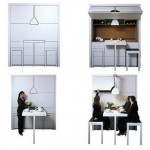
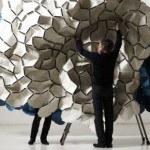






















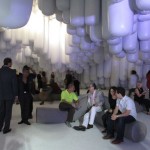
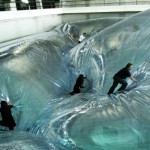
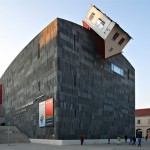

You must be logged in to post a comment.